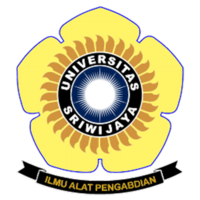Sejarah Persemaian Padi Terapung Sebagai Kearifan Lokal Etnis Ogan Mengelola Rawa Lebak
Abstract
Sakir IM, Sriati S, Saptawan A, Juniah R. 2020. History of floating rice nursery as ogan ethnic local wisdom managing wetlands. In: Herlinda S et al. (Eds.), Prosiding Seminar Nasional Lahan Suboptimal ke-8 Tahun 2020, Palembang 20 Oktober 2020. pp. xx. Palembang: Penerbit & Percetakan Universitas Sriwijaya (UNSRI).
This study aims to examine the history of floating rice nurseries and the local wisdom of the Ogan ethnic in Pemulutan in managing the wetland swamp environment. The research method used is phenomenology for describing in detail the phenomena of the agricultural system carried out by the Pemulutan community. The results showed that the history of floating rice nurseries carried out by the Ogan ethnic group is estimated to have existed since the traditionalist generation. The traditionalist generation is a generation that is simple, patriotic and wise in managing the environment. The simplicity is shown by the Ogan ethnic group in Pemulutan in managing lowland swamp farming, using local resources such as wild plants from swamp grass (berondong) and freshwater algae (reamon). Berondong and Reamon are the names of local people for floating rice nurseries. The Ogan ethnic group uses natural resources around agricultural land as a form of local wisdom to adapt to their environment. Local wisdom in managing lowland swamps is Indonesia's cultural wealth that must be preserved. The Pemulutan community preserves the swamp farming system using floating techniques. This agricultural model has been applied from generation to generation as a legacy of wetland swamp farming. Wetland in west Pemulutan is spreading over 11 villages, namely; The bund or shallow backland area is around 1,279 hectares or 33 per cent, the middle backland area is 1,909 hectares or 49 per cent, the remaining 18 per cent or 736 hectares are deep backlands. The bund and middle backland are potential lands for agricultural cultivation, while deep backland is using for fisheries and livestock.
This study aims to examine the history of floating rice nurseries and the local wisdom of the Ogan ethnic in Pemulutan in managing the wetland swamp environment. The research method used is phenomenology for describing in detail the phenomena of the agricultural system carried out by the Pemulutan community. The results showed that the history of floating rice nurseries carried out by the Ogan ethnic group is estimated to have existed since the traditionalist generation. The traditionalist generation is a generation that is simple, patriotic and wise in managing the environment. The simplicity is shown by the Ogan ethnic group in Pemulutan in managing lowland swamp farming, using local resources such as wild plants from swamp grass (berondong) and freshwater algae (reamon). Berondong and Reamon are the names of local people for floating rice nurseries. The Ogan ethnic group uses natural resources around agricultural land as a form of local wisdom to adapt to their environment. Local wisdom in managing lowland swamps is Indonesia's cultural wealth that must be preserved. The Pemulutan community preserves the swamp farming system using floating techniques. This agricultural model has been applied from generation to generation as a legacy of wetland swamp farming. Wetland in west Pemulutan is spreading over 11 villages, namely; The bund or shallow backland area is around 1,279 hectares or 33 per cent, the middle backland area is 1,909 hectares or 49 per cent, the remaining 18 per cent or 736 hectares are deep backlands. The bund and middle backland are potential lands for agricultural cultivation, while deep backland is using for fisheries and livestock.
Keywords
floating rice, cultural heritage, swamp farming
Full Text:
PDFArticle Metrics
Abstract view : 1084 timesPDF - 2019 times
Refbacks
- There are currently no refbacks.

